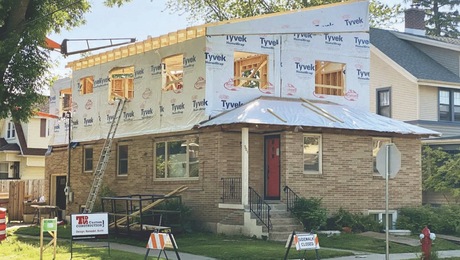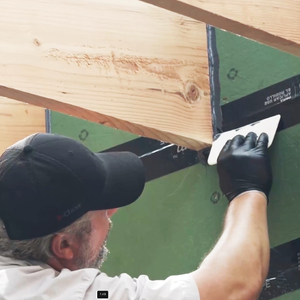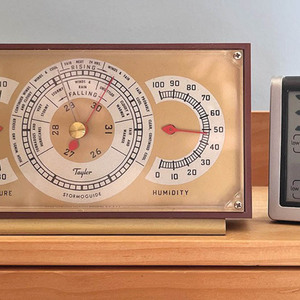I have a dilemma. I am going to replace the funky set of basement stairs in my house with an L shaped set to pull the stairs away from the basement wall. The current set of stairs as per 1954 is a set of 2×10 stringers with the tread being nailed to a 1 1/2 x 1 1/2 inch cleat, no risers and the stairs end about 16 inches away from my basement wall!
My problem is that where the stairs are gonna start (in my kitchen) there is still subfloor and the basement floor is so far outta level I don’t really know how to get an accurate measurement. I need some ideas on how to measure “around the corner” if you will. The kitchen floor isn’t perfectly level to begin with so I need a way to measure from what I have to what I want if that makes any sense.
Jeff


















Replies
Can you draw a level line on the wall? This will give you Total Rise, which will let you know your Total Run. Plumb down from where stairs will start, and make a mark on your level line. Measur out your individual runs to find your landing spot. Build landing first. Build two seperate sets of steps. The rise may differ by 1/8th when you do your double checks but with the landing there an 1/8th won;t be noticed.
If you give me dimensions, I can help you more.
I hope Chuck Norris never potato sacks me!!!!
bstcrpntr --- I hope to grow into this name.
Make a water level. All that is a clear plastic hose fill it with water (get the air baubles out) hold one end by the top of the steps and take the other end to where you want the steps to land.
Measure to to the basement floor from the level of the water. Next measure from the water level in the tube at the head of the stairs to the finished floor in the kitchen and add the two together.
I am not sure about your area, but around here the landing allows for 2 different riser heights.
Get as close as you can for a riser height top to bottom, frame your landing and your upper set of stairs. Then frame the lower set maybe with a different riser height.
Set your stringer to your height at the landing and check the bottom of the stringer for a good fit against the concrete. I cut an extra 1-1/2" off the bottom of the stinger and fasten a couple of treated 2x8's to the concrete for the stringers to set on.
Have you tried to work backwards? Try levelling (one l or two?) from the floor approximately where the stair terminates, to the basement wall that is perpendicular to the termination point, then level this mark with a longer two x whatever is straightest to below existing floor and check the measurement from finished floor to finished floor. This should give you your overall height. If the floor is sloped to where you cannot do this, mark the top of straight edge and add the width of it. Does this make sense?
I think this is what you're looking for. Sometimes you have to think about this stuff in reverse order. This is how I do odd shaped stair cases sometimes, from the bottom up.
Since nobody has mentioned headroom I will, do you have enough ? You're going to be losing at least 2 treads ie. 2 risers so probably 15" - 16" of headroom at your landing you should have a minimum of 6' 8" , but if you have a hard head and a limber back you can get by with less.
Thanks for the ideas guys! I was gonna start cutting and doubling floor joists today but I just now got home. I know I'm gonna have a 9 inch run so I know where the new part of the stair hole will start and I like the water level idea so I guess I'll give that a shot. I'm gonna get some pictures before I start tearing things apart, as I've done with everything else in this house.
This should be rather simple and hopefully won't take any longer then one long weekend. I won't be totally done with it in one weekend but I'll have all the necessary joists doubled up, the other joists cut and in hangers, the walls built to hold up the hole and the stairs and landing in. I just snapped a picture and I'll attach it if I can figure out how to do that.
I just put some tape down on the floor to represent the new hole, hope you can see it in the picture. The other picture is the current set of stairs. Don't laugh at my cabinet, it was the very first one I ever made!. Once again, thanks for the ideas!!Jeff
Have you thought about winders?
Wouldn't have to enlarge the stairwell. Just a thought. I'm a fool to do your dirty work.
Yes I have thought about a set of winders. Head room came into play with those and I'd have to rearrange my kitchen cabinets and appliances. I originally wanted to do a set of switch backs but after figuring out the stair hole width I'd have to use (after moving my fridge and changing one cabinet to a 15" as opposed to the 18" I have now) my stairs would have only been about 2'4" wide. I didn't like that idea. That's how I came to the L shaped stair idea, it will pull the stairs away from the basement wall and will give the house a different and new look.Jeff
Jeff
Are you sure that the L shaped stairs are going to fit?
You are adding a few risers but also a landing that now takes up a 3'x3' area in your run calculations.
Maybe I am full of chit. Just curious about this. I'm a fool to do your dirty work.
Those are just some goooood lookin' pics man. Nice work.
Comin from you thats quite a compliment. Mr. Freestanding Circular Stair Guy. :)
I'm a fool to do your dirty work.
Well I got it all figured out now. 11 risers, 8 1/8" rise and a 9 inch run. Not what I'd like to have but I can deal with it. If I went to 12 risers that would drop my rise to 7 7/16" but then the stairs would land to close to the basement wall. Matter of fact they would land 15 inches away from the wall, they are 13 inches off the wall now which is the way I bought the house. The basement is only 6'9" from the concrete to the bottom of the joists so I really don't have lot of room to play with.
I had to add one more riser to the set of stairs above the landing which made the hole protrude farther into the kitchen but I showed my better half and she said that was fine. I've started building the walls in the basement to hold up the joists while I cut em off and do the rest of the floor framing work. Thanks for the help guys!Jeff
It's a bit hard for me to understand what you have in mind but the "newhole" pic looks like you intend to do some winders... it looks like the floor is cut back at a 45 degree angle? If that is the case be aware that the narrowest part of a winder can only be 4" at the smallest - by many codes - some even only allow a min of 6".
Anyway, paruse this webiste/booklets to get some info on stair building codes. Your mileage/requirtements may vary.
I guess it's too late now, and I obiously don't know you basement layout and your intentions for the use of that basement area, but from looking at your "oldhole" pic, I would have left the stair location as it was, only nixed the bottom 2 treads, put a landing there up against the wall, and then had a right angle turn with the last couple of risers/treads - headroom permitting.